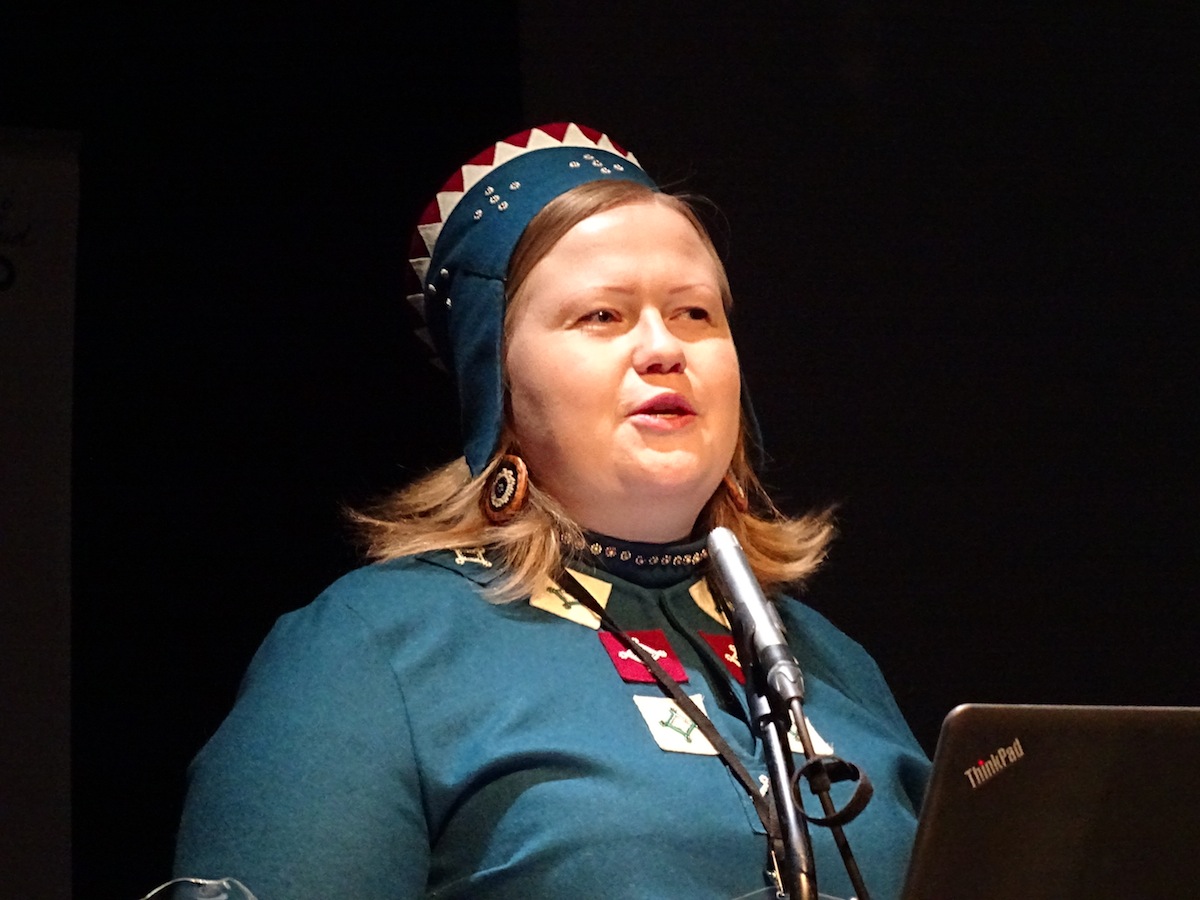Indigenous participants help keep Finland’s Arctic conference on track
In his keynote speech at an Arctic conference now underway in Rovaniemi, Timo Soini, Finland’s foreign affairs minister, summed up what many feel is a crucial element to international gatherings such as this.
“There must be a respect for Indigenous people’s cultural identity and languages,” said Soini, Nov. 15, day one of the Arctic Spirit conference hosted by Finland as the current chair of the Arctic Council.
“In the Arctic Council we are happy that the Indigenous peoples’ organizations across Europe, Asia and North America are participating actively in its work.”

But strangely, there were few Indigenous Arctic participants to be seen at the Arctic Spirit conference and no Saami input during the conference’s Nov. 14 opening.
However, Indigenous speakers made some memorable points Nov. 15.
In her keynote address to the gathering, Saami Parliament President Tiina Sanila-Aikio brought the focus back to the Arctic and its residents.
Aikio reminded those present that “nothing is [to take place] about us, without us.”
She also highlighted the need to consider Saami language and culture.
“Our physical and mental and spiritual well-being is under threat without access to language,” said Aikio, adding that Finland plans to launch an online Saami language-learning program for Saami who live outside the North.
Much of the day’s discussions looked at the sustainable development goals, developed by the United Nations, which are supposed to guide the Arctic Council’s eight member countries in managing development without compromising future generations in meeting their own needs.
The set of 17 “global goals” for 2030 cover a broad range of sustainable development issues, such as ending poverty and attaining peace and justice.
A panel, led by Pirita Näkkäläjärvi, a former journalist who is now a consultant, who was recently named Finland’s Saami of the Year, talked about the relationship between sustainable development and economic development in the Arctic.
Panelists, who included high-ranking officials and the director of the Cold Climate Innovation Centre at Yukon College, largely agreed on the need for education and Indigenous involvement to boost the Arctic’s economy in a environmentally sustainable way.
But, after listening to the panel, Aleqa Hammond—a former Greenland premier and now one of two MPs for Greenland in the Danish parliament—asked a question that pulled the panelists back to reality.
Hammond said she has been listening for years to similar discussions.
“What is it that is going to make it work?” she asked. “What are you going to do so that it’s not just words on piece of paper?”
That prompted panelist Tero Vauraste, CEO of Finland’s national icebreaker company Arctia and current chair of the Arctic Economic Council, to say he would continue working towards a free-trade zone for the Arctic.
Vladmiri V. Barbin, Russia’s ambassador-at-large for Arctic Affairs, said Russia was trying to offset environmental damages from its giant oil and gas projects on the Yamal Peninsula.
But Barbin said that takes time to deliver.
You can find the full schedule of the Arctic Spirit conference here or watch the sessions live here.